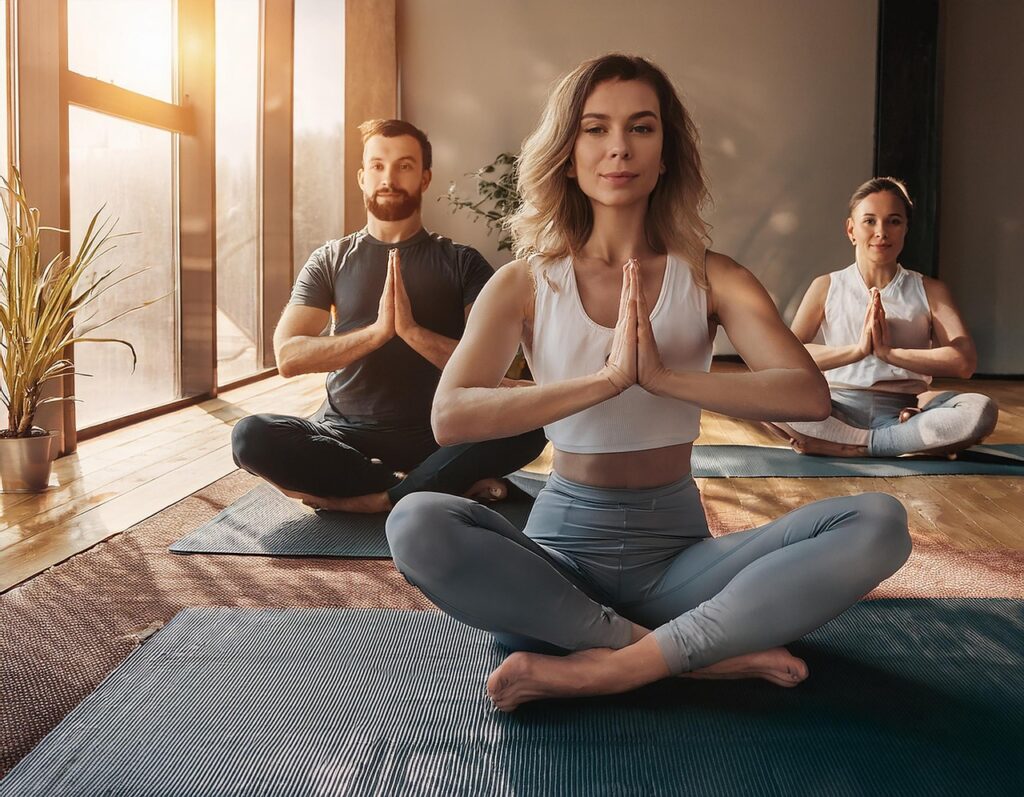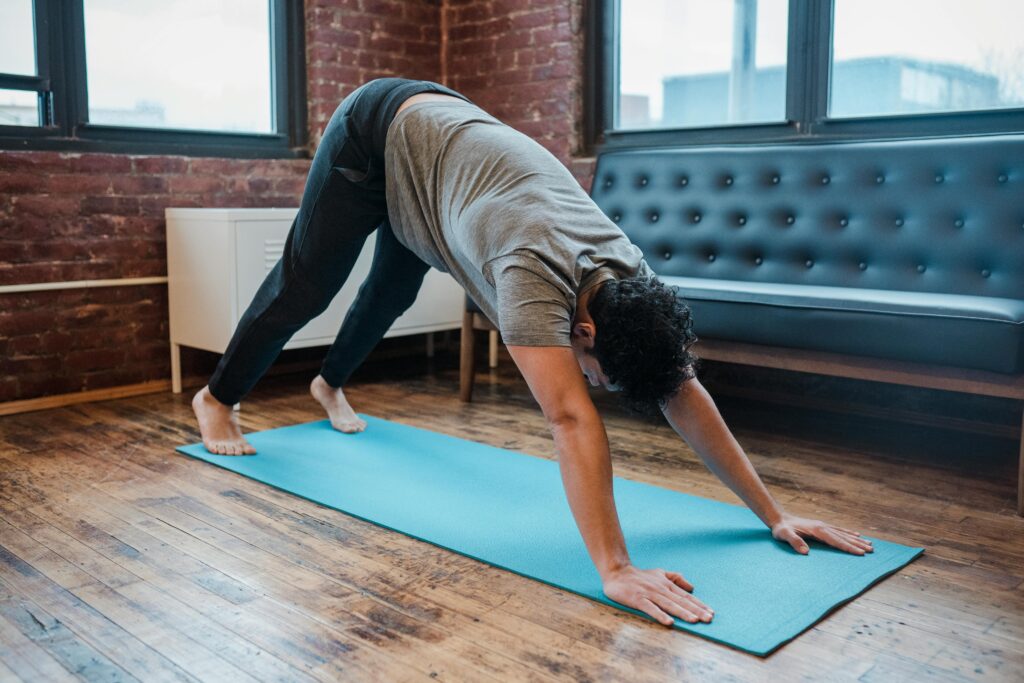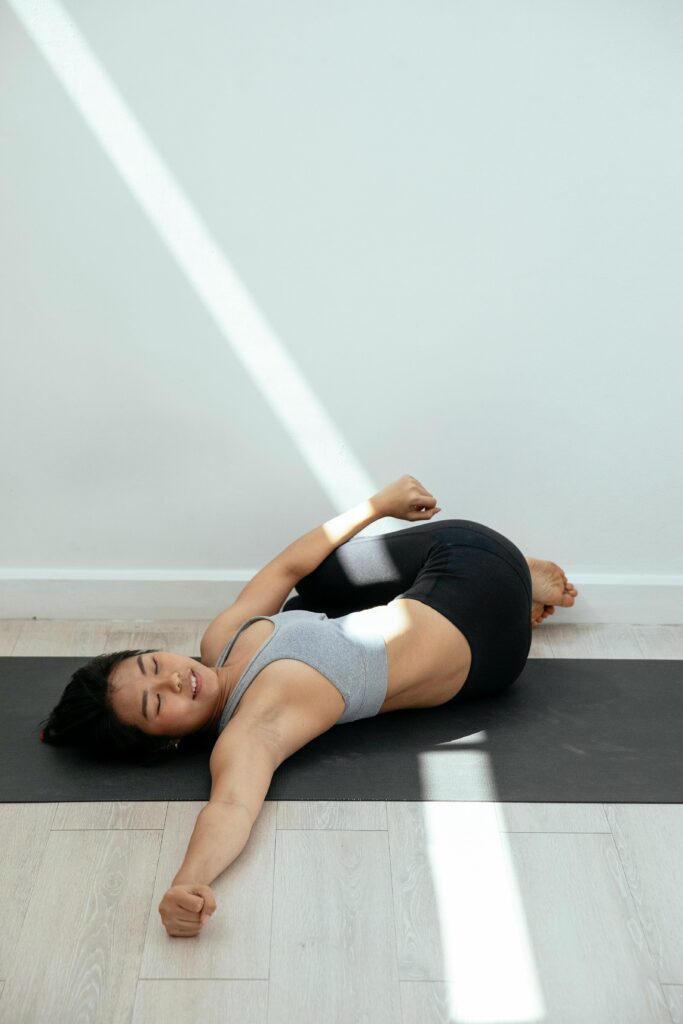If you spend a lot of time on a screen, you may want to consider a quick yoga practice for a digital detox. Why?
Health experts recommend spending a maximum of two hours per day on a screen. Yet, Americans spend an average of just over five hours per day on their phones. And that’s just the phone! Add in additional time spent using computers and tablets or watching movies or TV shows on TV, and that number increases.
So while a full-on digital detox may be called for, starting with a daily break to do some yoga poses can help you get started.
Is It Time for a Digital Detox?
Consider the following questions:
- When you don’t have your phone, do you feel stressed out or anxious?
- Are you concerned about FOMO (fear of missing out) if you don’t check your phone or email every few minutes?
- Do you feel angry or depressed after viewing social media?
- Is it difficult to concentrate or focus on a solitary thing?
If you answered yes to any of these, it might be time to refrain from using electronic devices and spend that time instead doing things that relax your mind and nourish your body.
The Dangers of Too Much Screen Time

Being constantly connected creates addictive behavior. That’s because each time you get a ‘like’ on social media, you get a hit of the “feel good neurotransmitter” dopamine. Repeated hits can create a need for more and more dopamine and negatively impact your mood, stress levels, and social interactions.
What’s more, exposure to electromagnetic field (EMF) devices encourages heightened states of arousal and hormonal changes – leaving you in a steady state of ‘fight or flight’ wherein your cortisol stress hormone levels spike for something as trivial as a text or notification.
Sure, there are plenty of advantages to tech. Unfortunately, there are also many downsides linked to psychological, social, and physical problems.
In addition, your sleep routine also gets disrupted because light-emitting electronic devices at bedtime stimulate your brain activity and suppress the production of the essential sleep hormone melatonin.
And being hunched over while looking at screens for long periods is also hard on the body. A study from the National Library of Medicine shows that prolonged use of smartphones could affect posture and respiratory function and cause neck and shoulder issues.
A Quick Yoga Practice for a Digital Detox
When you want an occasional release from the mental clutter and busyness, a short yoga practice can help you achieve a state of flow on one activity. It’s also a great way to start preparing for a full digital detox, should you choose that route.
We recommend the following quick flow of gentle movements and breathing exercises. Try to do each pose/breathing exercise a minimum of 30 seconds.
1. 4-4-8 Breath

Start in a comfortable seated position and close your eyes. Take a deep breath in and release it. Then, inhale for four counts, hold the breath for four counts, and let the breath out for eight counts. The long exhale can help reduce stress and trigger the body’s relaxation response.
2. Child’s Pose
From the seated position, roll over onto your hands and knees. Bring the big toes to touch together and let your knees splay open. Ease your torso back and down between your thighs and extend the arms forward, resting your head on the mat. Breathe deeply as you feel tension in the back, shoulders, and neck release.
3. Downward-Facing Dog
Come back onto hands and knees. Tuck your toes and lift your knees off the floor. Begin to straighten the legs, allowing the hips to move toward where the wall meets ceiling. You’re making an inverted V-shape. Let your head hang heavy between the arms.

In this shape, you can move around as you see fit. Perhaps alternating bending knees (walking the dog) or lifting on your toes and then drawing the heels back toward the earth.
Breathe deeply. Then slowly walk the hands back to the feet to find a standing forward fold.
4. Forward Fold
In this pose, keep your feet hip-width apart and let your head hang heavy to release tension in the back of your legs and spine. A standing forward fold effectively stretches the hamstrings, calves, and lower back, while calming the mind.
Slowly, one vertebra at a time, roll yourself up to standing.
5. Squat
From your standing position, bend your knees and lower your hips towards the floor to come into a squat. Try to keeping your back straight. If your heels lift off the floor, that’s okay. Just tuck a folded blanket under your heels to provide support.
Bring your palms together in prayer position at your chest, using your elbows to gently press against your inner knees to open your hips. Breathe deeply. When ready, release hands behind you to come to seated. (At this point, you could do an OPTIONAL Breath of Fire to clear out toxins from the body and give your body a reboot. You can watch a great tutorial on how to do this by clicking here.)
From there, roll down onto your back.

6. Supine Twist
Many yoga practices end with a supine twist because it’s a great way to release the lower back, hips, and shoulders while calming the nervous system. From your supine position, simply draw the knees into the chest and let them fall to the side while your shoulders stay grounded. You can move this back and forth, or hold on each side.
7. Corpse Pose
Corpse pose is your final and deeply restorative pose that allows your body to integrate the benefits of your short yoga flow. Simply lie down, close your eyes, and breathe into your body. You’re essentially taking deep rest, yet remaining very much awake.
Cultivate Mindfulness With Us!
Once you begin to do the above quick yoga practice for digital detox, you’ll recognize that yoga is more than just a physical practice. Yoga is ultimately about cultivating mindfulness and presence, both on your mat and off.
If you’d like support in cultivating this state through yoga, contact us today.
Our online and in-person sessions will help you set boundaries and prioritize self-care so that you can use technology more consciously and mindfully.



